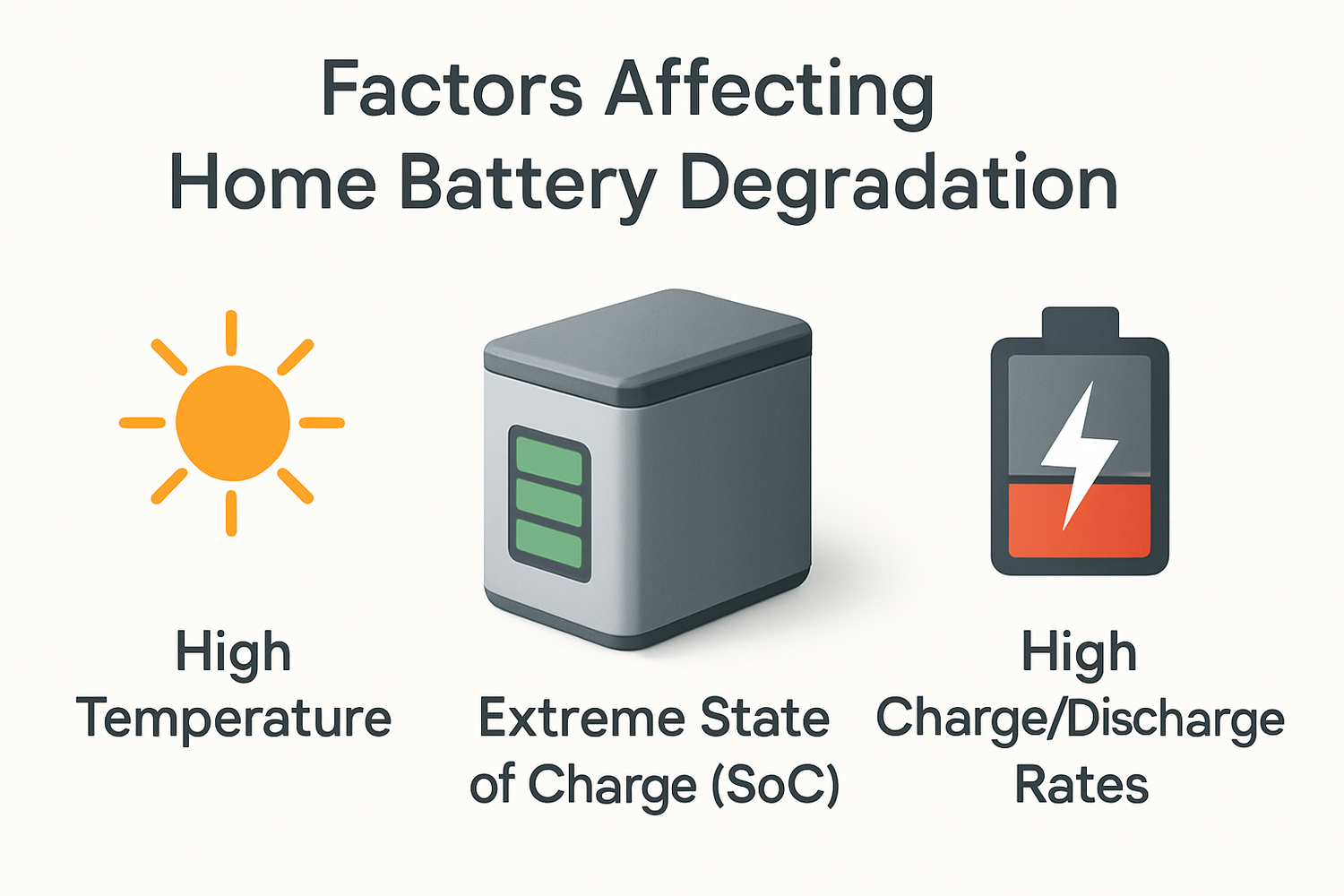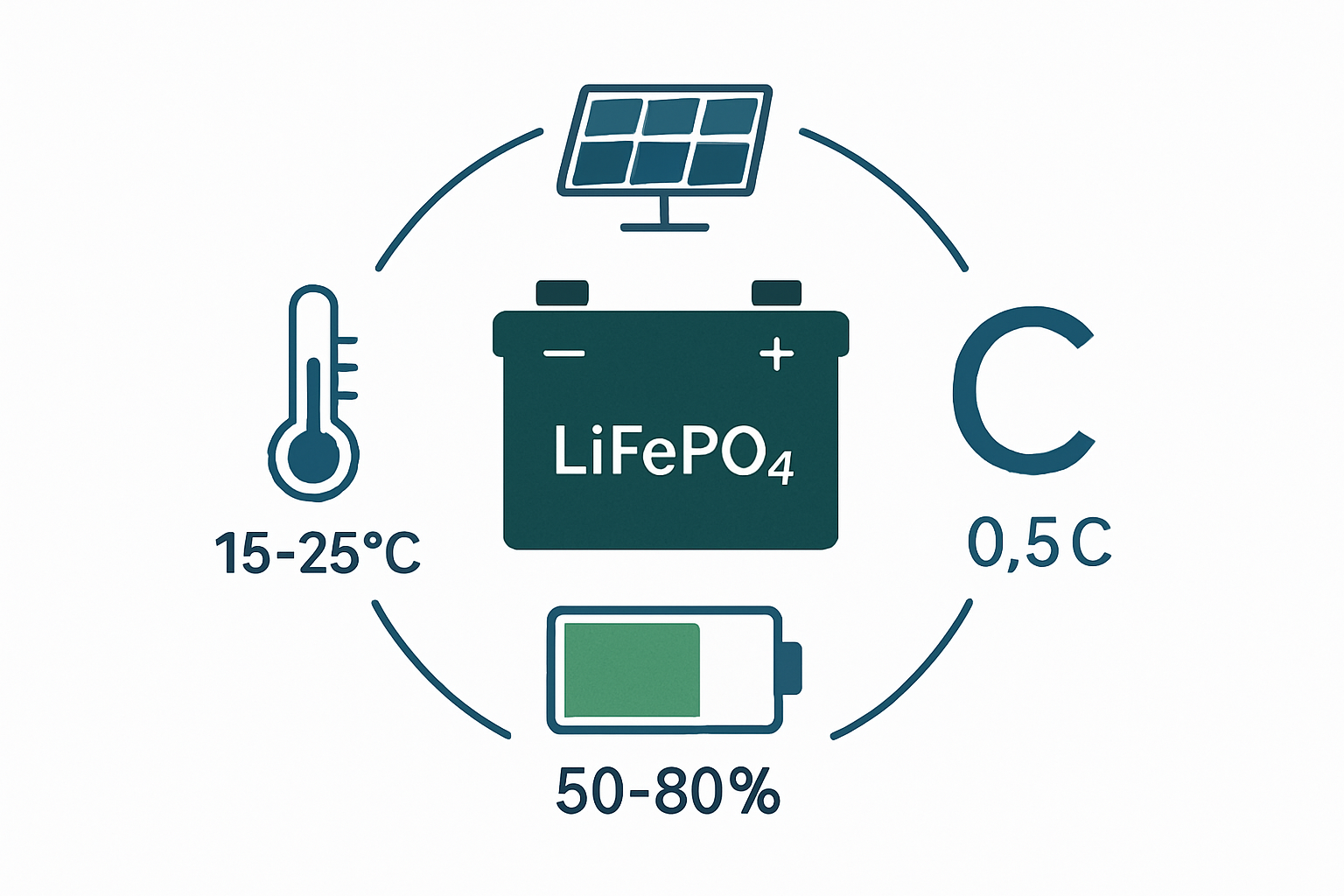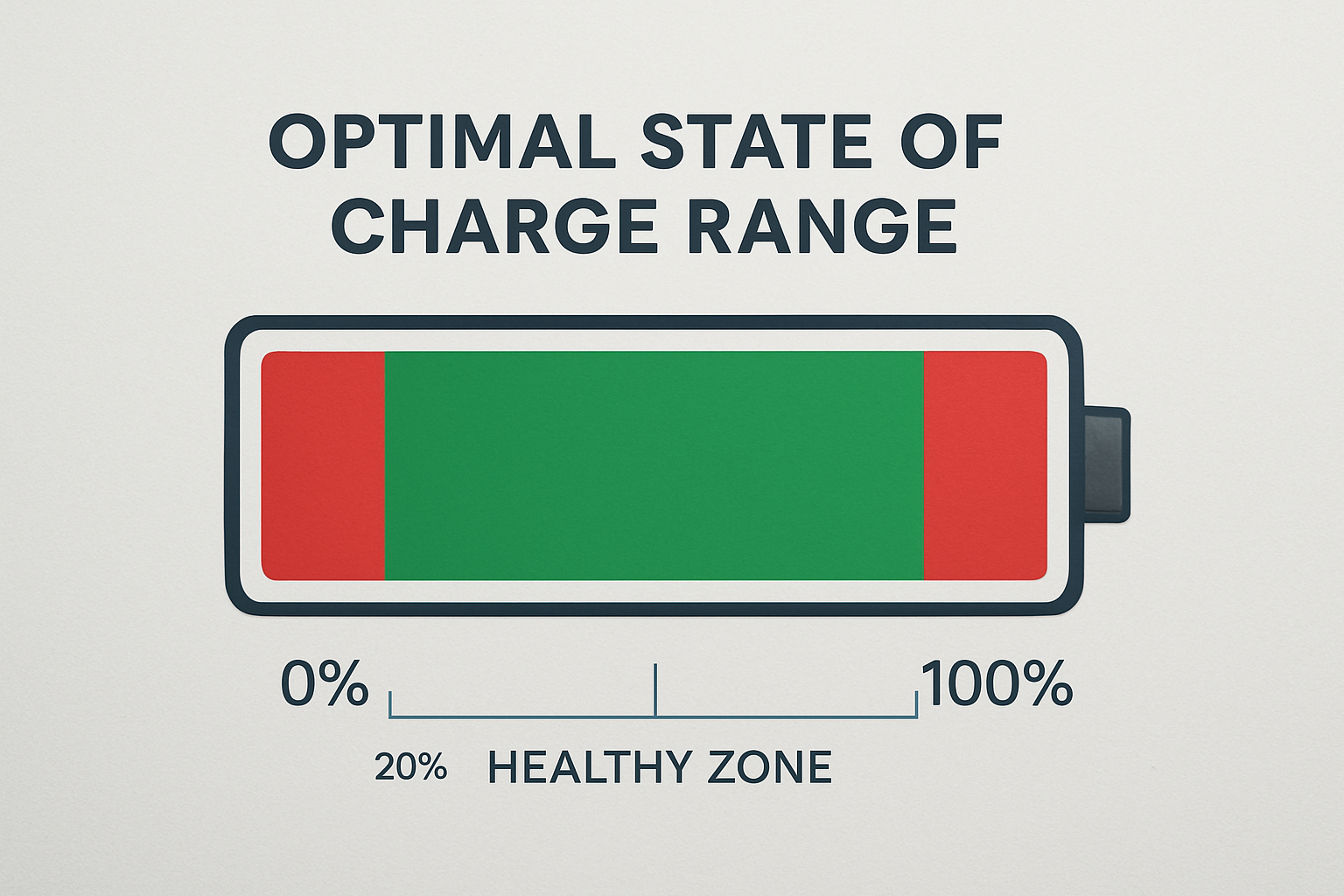Investing in a home battery storage system is a significant step toward energy independence. It promises backup power during outages and smarter energy management. But like all batteries, its ability to hold a charge diminishes over time. This process is called degradation. While some capacity loss is normal, accelerated degradation can compromise your system’s performance and financial returns. Understanding the difference between normal and premature aging is key to protecting your investment.
Understanding Normal vs. Abnormal Battery Degradation
Battery degradation is the gradual, irreversible loss of a battery's capacity to store and deliver energy. It's a natural electrochemical process. The key is to ensure it happens as slowly as possible. Most quality home batteries come with a warranty guaranteeing they will retain a certain percentage of their original capacity, typically 60-80%, after 10 years or a specific number of cycles.
Benchmarks for a Healthy Lifespan
A battery's lifespan is measured in cycles—one full charge and discharge—and energy throughput. A typical lithium-ion battery for home use is designed for thousands of cycles. For a deeper dive into performance metrics, the ultimate reference for solar storage performance provides crucial details on how cycle life and depth of discharge influence long-term value. Keeping an eye on these metrics helps you gauge if your battery is aging gracefully.
Signs Your Battery Might Be Degrading Prematurely
How can you tell if your battery is losing capacity faster than it should? Look for these signs:
- Shorter Backup Duration: The most obvious sign is that your battery doesn't power your home for as long as it used to during an outage.
- Inability to Reach Full Charge: Your system’s monitoring app may show that the battery consistently fails to reach a 100% state of charge.
- Frequent System Alerts: Warnings from the Battery Management System (BMS) about cell imbalances or performance issues can indicate underlying problems.
The Primary Drivers of Accelerated Home Battery Degradation
Several factors can cause your home energy storage lifespan to shorten. By managing them, you can significantly slow the degradation rate. According to research, the main culprits are temperature, charging habits, and high charge/discharge rates.
Temperature Extremes: The Silent Killer
Temperature is a critical factor. High temperatures, generally above 30°C (86°F), accelerate the chemical reactions inside the battery, leading to faster capacity loss. Conversely, charging in freezing temperatures can cause permanent damage. The optimal operating temperature for most lithium-ion batteries is between 15°C and 25°C (59°F and 77°F). Proper installation in a cool, shaded, and well-ventilated area is crucial.
Charging Habits: State of Charge (SoC) and Depth of Discharge (DoD)
How you charge and discharge your battery has a major impact. Consistently charging to 100% or discharging to 0% puts significant stress on the battery's components. This is known as deep cycling. To extend battery life, it's best to operate within a State of Charge (SoC) window of 20% to 80%. Many modern systems allow you to set these limits, preventing the battery from experiencing these stressful extremes.
High Charge and Discharge Rates (C-Rates)
The C-rate measures how quickly a battery is charged or discharged relative to its capacity. A 1C rate means a battery is fully charged or discharged in one hour. While fast, high C-rates generate more internal heat and stress, accelerating degradation. This is often a consequence of an undersized system. If a battery is too small for the home's energy demands, it will be forced to work harder at higher C-rates, shortening its life.
Proactive Strategies to Maximize Your Battery's Lifespan
Slowing battery degradation is achievable with the right approach. It involves a combination of proper setup, smart technology, and mindful usage.
Optimizing Installation and Environment
The first step is a professional installation in a suitable location. A climate-controlled space like a garage or utility room is ideal, away from direct sunlight and moisture. Good ventilation helps dissipate heat generated during operation, keeping the battery within its optimal temperature range.
Leveraging Your Battery Management System (BMS)
The BMS is the brain of your energy storage system. It protects the battery by preventing overcharging, deep discharging, and overheating. It also ensures all battery cells are balanced, which is vital for health and performance. Regularly check your system’s monitoring app to review its status and configure any available settings to promote longevity.
Smart Usage Patterns
Adjusting your energy consumption habits can make a difference. Try to spread out the use of high-power appliances to avoid high discharge rates. Aligning your heavy energy use with peak solar production times minimizes reliance on deep battery discharges. This approach is central to hybrid systems that combine solar and storage, which are becoming crucial for grid flexibility, a point emphasized in IRENA's 'Renewable Power Generation Costs in 2024' report.
The Role of Battery Chemistry in Degradation
Not all lithium-ion batteries are created equal. The specific chemistry used plays a significant role in degradation rates, safety, and performance.
LiFePO4 vs. NMC: A Quick Comparison
The two most common chemistries in home energy storage are Lithium Iron Phosphate (LiFePO4) and Nickel Manganese Cobalt (NMC). LiFePO4 batteries are known for their exceptional safety, thermal stability, and long cycle life, often capable of thousands of cycles with minimal degradation. NMC batteries offer higher energy density, meaning they can be smaller and lighter for the same capacity. This makes them popular in applications where space is a premium, a trend noted in the IEA's report, 'The Role of Critical Minerals in Clean Energy Transitions'.
Why Chemistry Matters for Your Home
For stationary home storage, where size is often less critical than longevity and safety, LiFePO4 chemistry is frequently the superior choice. Its inherent stability leads to slower degradation, especially in warmer climates. While NMC technology is effective, its higher operating voltage can put more stress on materials, potentially leading to a faster increase in internal resistance over time. Healthy batteries are the backbone of resilient microgrids, which can keep critical facilities powered during outages, as demonstrated in projects supported by the U.S. Department of Energy.
Protecting Your Energy Future
While battery degradation is an unavoidable part of owning a home energy storage system, its speed is not. By understanding the key factors—temperature, charging behavior, and discharge rates—you can take proactive steps to extend your battery's useful life. Choosing the right chemistry like LiFePO4, ensuring proper installation, and using your system intelligently will help you maximize your return on investment and enjoy reliable, clean energy for years to come.
Disclaimer: The information provided in this article is for educational purposes only and does not constitute financial or investment advice. Always consult with a qualified professional before making decisions about your energy system.
Frequently Asked Questions
How long should a home battery storage system last?
Most modern home batteries, particularly LiFePO4 models, are designed to last 10 to 15 years. Warranties typically guarantee the battery will retain 60-80% of its original capacity by the end of this period. Actual lifespan depends heavily on usage patterns, battery chemistry, and environmental conditions.
Can I stop my battery from degrading completely?
No, degradation is a natural electrochemical process that cannot be stopped entirely. However, you can significantly slow it down by maintaining an optimal temperature, avoiding frequent deep discharges, and using smart charging strategies to extend its useful life far beyond the minimum expectation.
Does the brand of battery affect its degradation rate?
Yes, absolutely. The quality of materials, manufacturing precision, and the sophistication of the integrated Battery Management System (BMS) vary significantly between manufacturers. Choosing a reputable brand with proven technology, such as high-performance LiFePO4 batteries, and a strong warranty is a key factor in ensuring slower degradation and long-term reliability.
What is a 'cycle' and how does it relate to degradation?
A cycle refers to one full charge and one full discharge of the battery. For instance, charging from 20% to 100% and then using that energy until it's back at 20% constitutes one cycle. Each cycle contributes a small amount to the battery's overall degradation; deeper cycles cause more stress and wear than shallower ones. A battery's cycle life rating indicates how many cycles it can endure before its capacity drops to a specified level.





Leave a comment
All comments are moderated before being published.
This site is protected by hCaptcha and the hCaptcha Privacy Policy and Terms of Service apply.